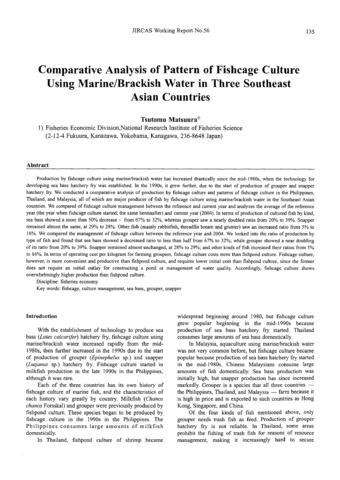Growth rate of Gracilariopsis heteroclada (Rhang et Xia) Zhang et Xia (Rhodophyta) in floating cages as influenced by Lates calcarifer Bloch
Share
Abstract
Fragments of Gracilariopsis heteroclada weighing 10 g each were inserted in a polypropylene rope, suspended at different depths (25 cm, 50 cm and 100 cm below the water surface) and cultured with Lates calcarifer fingerlings (22-25 cm long and 158-252 g) in floating net cages from April to October. After seven months of culture, the specific growth rate of G. heteroclada was found to be influenced significantly (p ≤ 0.05) by the interaction of three factors: sea bass, water depth, and month of culture.
Highest growth rate of Gracilariopsis heteroclada was recorded at 25 cm below the water surface during the month of April unaffected by the presence or absence of sea bass; while the lowest growth rale was observed at 100 cm during the months of September and October in the absence of sea bass. Approximately, 172 (dry) g m-2 mo-1 is produced from this culture system.
The average length and weight of Lates calcarifer at the end of seven-month culture period was 35-39 cm and 565-741 g, respectively. Percentage weight gain/cage was 195-258, survival rate was 92-100%, and total fish production per cage was 6,780-9,637 g.
Subject
Taxonomic term
Collections
Related items
Showing items related by title, author, creator and subject.
-
Comparative analysis of pattern of fishcage culture using marine/brackish water in three Southeast Asian countries
Matsuura, Tsutomu (Japan International Research Center for Agricultural Sciences, 2007)Production by fishcage culture using marine/brackish water has increased drastically since the mid-1980s, when the technology for developing sea bass hatchery fry was established. In the 1990s, it grew further, due to the ... -
Aquaculture in Malaysia
Kechik, Ismail bin Awang. (Aquaculture Department, Southeast Asian Fisheries Development Center, 1995)Aquaculture in Malaysia is experiencing rapid growth. Total production in 1992 amounted to 79,699 tons valued at RM 207.4 million. These figures are 23% and 25% higher than the previous year's. Semi-culture of the cockle ... -
Aquaculture in the Philippines
Aypa, Simeona M. (Aquaculture Department, Southeast Asian Fisheries Development Center, 1995)Aquaculture is regarded as the most promising source of protein food in the years ahead. Milkfish and Nile tilapia are the major fishes now produced but groupers, sea bass, rabbitfish, red snappers, carps, and catfishes ...






